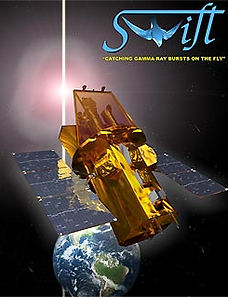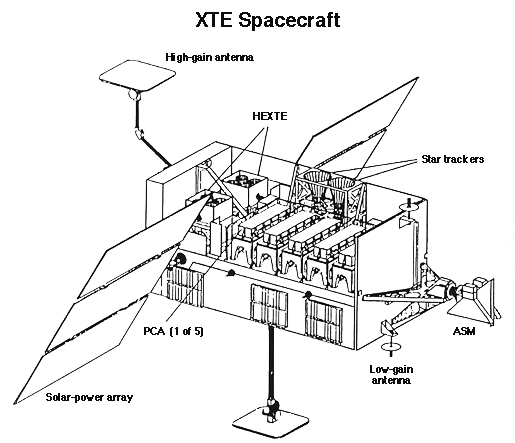Diego Altamirano
Welcome
The X-ray instruments
The Rossi X-ray Timing Explorer
I need to start with the The Rossi X-ray Timing Explorer (RXTE), as I used this instrument during my PhD thesis, and still today I am using the rich database of more than 16 years of observations. This mission was active between 1995 and 2012, and observed the fast-moving, high-energy worlds of black holes, neutron stars, X-ray pulsars and bursts of X-rays that light up the sky intermitently.
Make usre to visit the RXTE NASA web page (by clicking on RXTE or on the images above). Particularly, take a look at the "RXTE Results - Papers, Press Releases, and Presentations" section, or the "RXTE Science Highlights" Section. It is a pity that they had to turn it off (it was too old, and NASA did not have enough money to support it). Hopefully, we will have a similar mission soon, the Indian Scientific space-mission Astrosat.
XMM-Newton
The European Space Agency's (ESA) X-ray Multi-Mirror Mission (XMM-Newton) is another of my daily tools. Take a look at its "News" section. Needless to say, do not forget to visit the image gallery (Amazing!)
Chandra
Another of the great instruments available, is the NASA's Chandra X-ray Observatory. This is a telescope specially designed to detect X-ray emission from very hot regions of the Universe such as exploded stars, clusters of galaxies, and matter around black holes. Check Chandra's home page -- and again, do not miss the photo gallery section!


Swift
The Swift Gamma-Ray Burst Mission was originally built to catch and study Gamma-ray bursts (GRBs). These phenomena are the most powerful explosions the Universe has seen since the Big Bang. With the years, Swift has not only helped answered many questions about GRBs, but has also helped other areas of high-energy astrophysics. Check out their webpage for more information, including the outreach and education sections.


NuSTAR
This list would not be complete, without mentioning our very last acquisition: NuSTAR. The NuSTAR (Nuclear Spectroscopic Telescope Array) mission has deployed the first orbiting telescopes to focus light in the high energy X-ray (3 - 79 keV) region of the electromagnetic spectrum. NuSTAR is writing history (as the other missions above did!). Check out NuSTAR webpage for more information.




